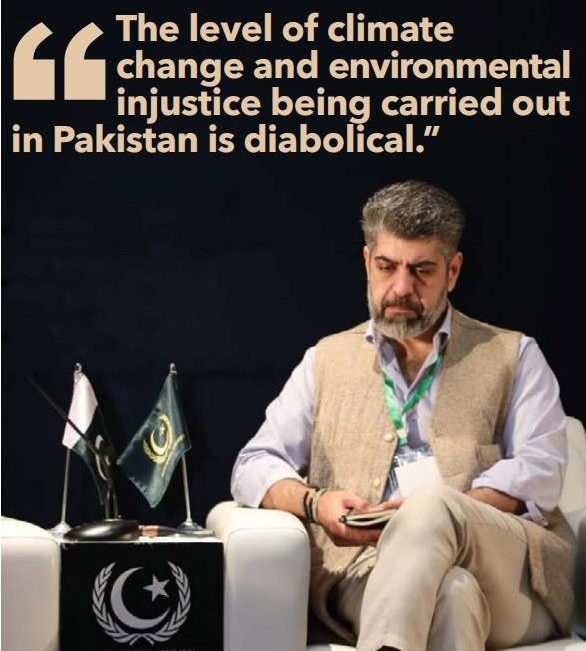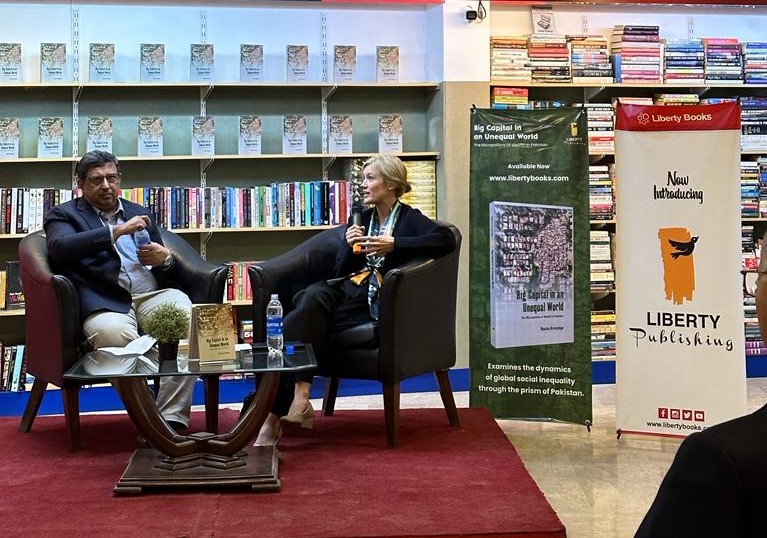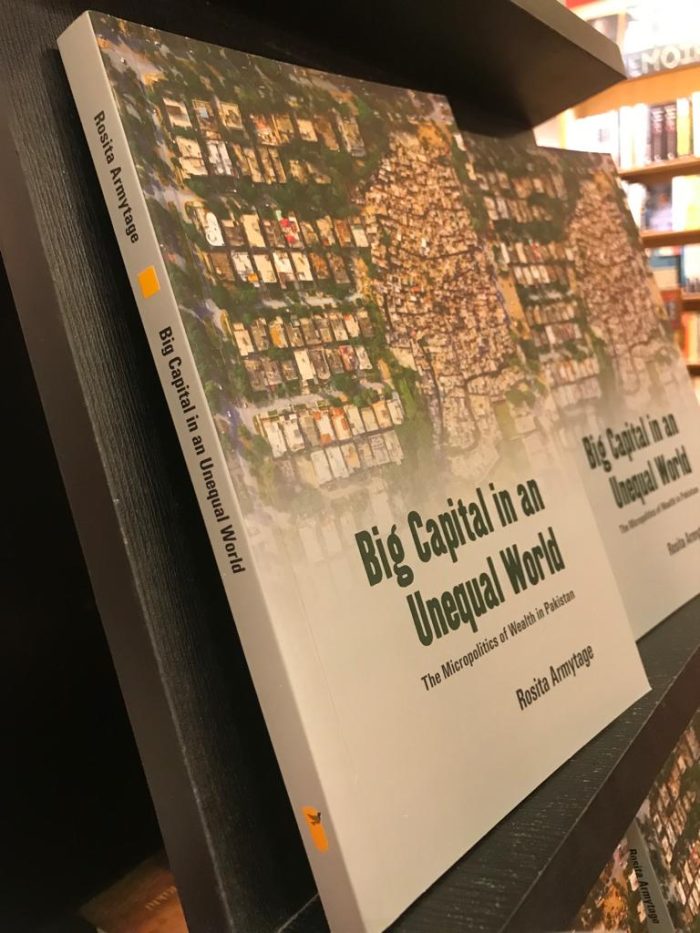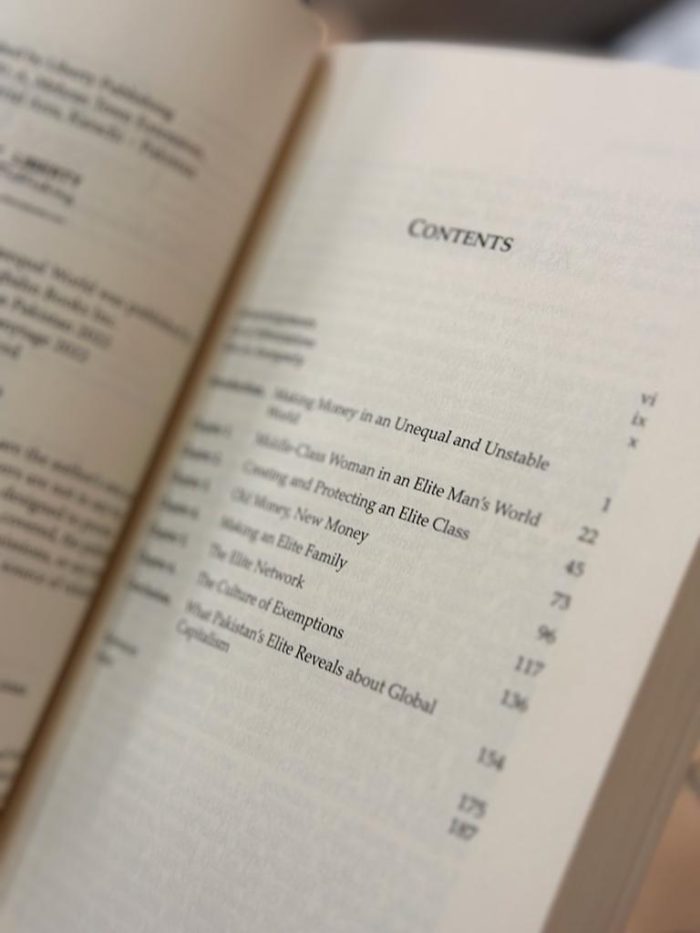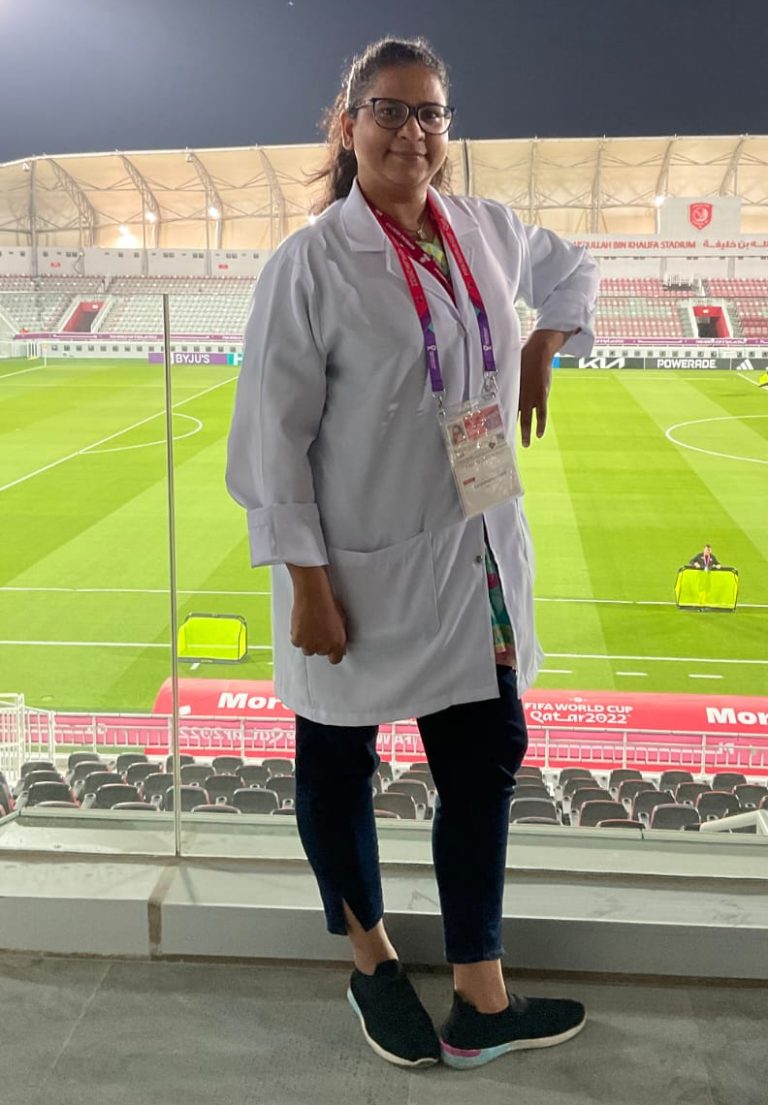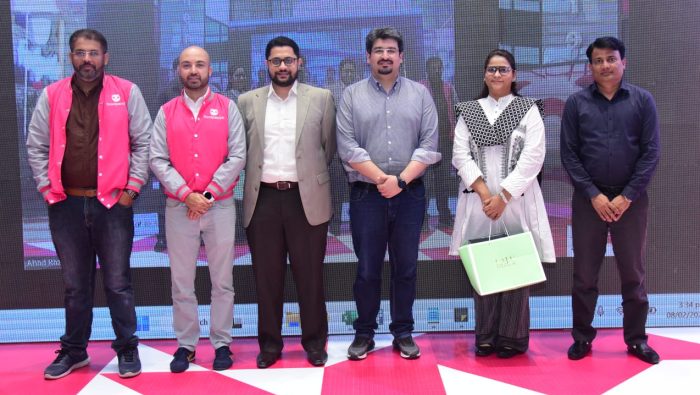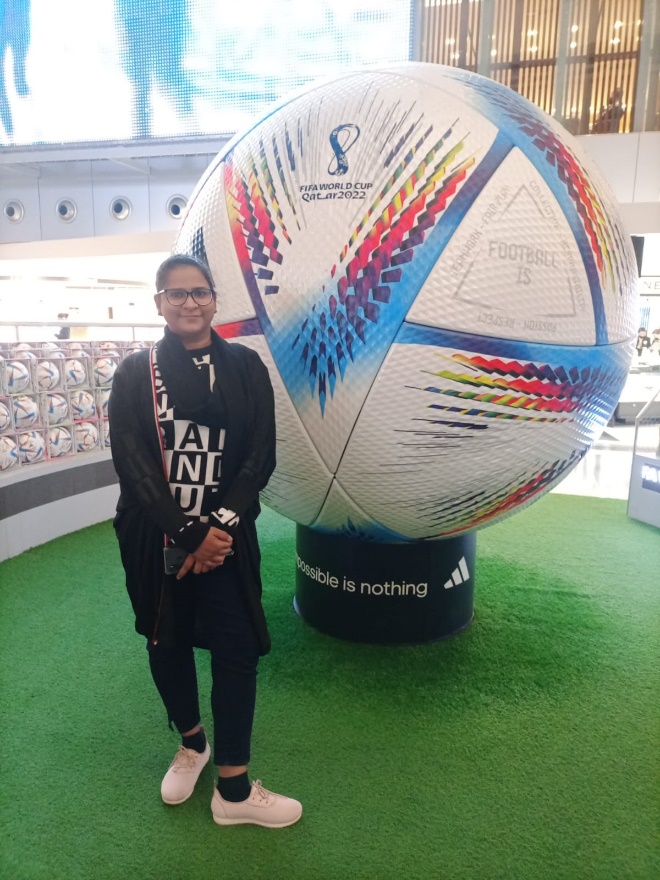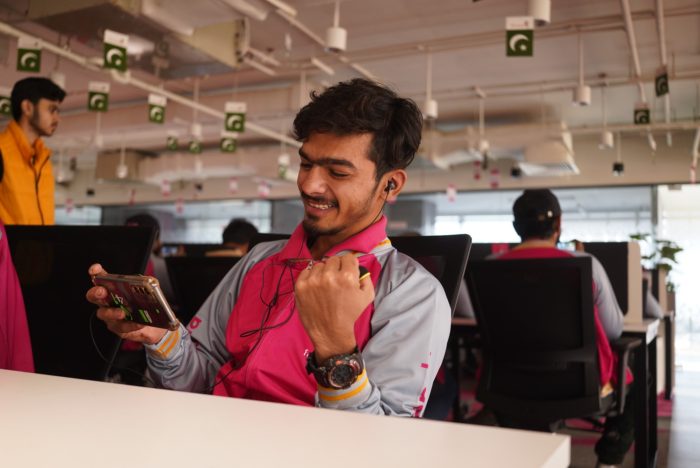SYNERGYZER: Could you tell us a little about your professional experience and how did you get into environmental activism?
AHMED RAFAY ALAM: I became a lawyer over 20 years ago, and I remember being one of the many enthusiastic idealists during that time. Eventually, I became a corporate lawyer (making rich people richer), but then, during the mid to late 2000s, came a series of experiences in my life which led to the idea of focusing on environmental law. Also, since there were many corporate/banking lawyers in the city, the move only seemed intelligent. Also, by that time, I had had a brush with environmental law (the action of it) since I had done some public advocacy. I think it has been a great journey so far. In Pakistan, there are very few environmental lawyers, and I am privileged to be one of them and also to have played a part in fighting against some of the major environmental issues of Pakistan in the last 15 years.
SYNERGYZER: What have been some of your achievements in environmental activism in these 15 years?
AHMED RAFAY ALAM: Well, we took an initiative (when I say we, I mean people from the civil society in Karachi, Lahore and Islamabad) concerning the widening of the Lahore canal and the cutting down of trees alongside it. There was some public campaigning and some judicial activism, after which the Supreme Court directed the government of Punjab to pass the law to protect the greenbelt and trees along the Lahore canal. This law was passed in 2013 as the Lahore canal heritage Park Act. So, it is a success story for the civil society holding protests to engage with the state and getting the desirable result. More recently, I have also been a part of litigation involving the Ravi urban development authority, which is a blatant land grab (unfortunately) aided by the state, and I am proud to represent landowners from the areas who are standing firm in their belief that what is happening is incorrect.
SYNERGYZER: So, is it correct that most of your activism is centred in Punjab?
AHMED RAFAY ALAM: Not really. I was involved in some work in Peshawar some years ago with the Peshawar Clean Air Alliance, a civil society organisation which aims to look after the mountains of Peshawar Valley. I was really happy to coordinate with them, and our work together resulted last year in the publication of the air quality report about Peshawar, which was undertaken by the finance minister and the climate protection agency. After the publication of this report, they arranged to have air quality monitors installed in all 14 branches of the Bank of Khyber. That was a success, as again, the civil society’s collective efforts yielded a result. What was actually interesting and, at the same time, unfortunate, was that the air quality meters installed began revealing the levels of air pollution in Peshawar, and they were promptly taken down soon afterwards by the environmental protection agency for ‘certain specification checks’. So, the air in Peshawar is as injurious as anywhere else in Pakistan, but the government does not want to admit it. But that’s another story.
SYNERGYZER: There has been a lot of talk lately about climate change and its adverse effects. Can you tell us what makes Pakistan so vulnerable to climate change and whether it has anything to do with its location?
AHMED RAFAY ALAM: Well, first of all, when it comes to climate change, there’s no particular part of the world that is safe. About 30% of Pakistan was under floods last year; close to 80% of Nigeria was under floods; there were immense and historic heat waves in Europe and China as well as in Canada, which resulted in deaths, and there were forest fires in the Amazon. The effect of climate change is everywhere, and Pakistan is not an exception. The country’s geographical location has nothing to do with it. Our vulnerability stems from our poverty because we are a poor nation. You see, vulnerability is inversely proportional to your resilience. If you are resilient, you are not vulnerable. We, Pakistanis, do not have the ability to jump back. Today, if you see the roads, schools, and hospitals; everything is washed away after the floods. There’s a generation of Sindhis and Balochis who will grow up without education and healthcare. But we are not resilient. Also, resilience constitutes good governance and preparation, and I am afraid we do not have either of those. If you look at Bangladesh, the country witnessed cyclones of great magnitude, but the destruction of property and the loss of life was minimal because they were prepared.
SYENRGYZER: What has been Pakistan’s stance on climate change?
AHMED RAFAY ALAM: The stance that Pakistan has taken is that the country is a very small contributor to the problem of climate change and yet, disproportionately affected. We have been consistently saying at climate meetings that we are not part of the problem, but since we are a poor country, please give us money. Last year was dramatically different because we saw unprecedented floods, and there’s an attribution report that says that up to 70% of the intensity of floods is caused by historical global warming, which Pakistan is not a part of, so this is very much a man-made disaster for which Pakistan is being made to pay. We have become the poster child of this loss and damage, which we were not prepared for. One can only be prepared to a certain extent. We have voiced our stance, lobbied well and showed tremendous leadership at the last COP27 meeting.
SYNERGYZER: Is there anything we are doing domestically to tackle such disasters?
AHMED RAFAY ALAM: Very little in terms of being prepared and to adapt. Also, it is not one department’s fault; the MET department should have told us what was happening, we should have had tents, rescue and response in place. We had none of that. Right now, if you look at Pakistan, the priorities are very different. We are giving subsidies to construction and the auto sector; we are bringing in new power plants; we are planning a road running from the Arabian Sea up through the Karakoram, Himalaya and Hindukush mountain ranges – one of the most sensitive areas of the world when it comes to climate change – and we’re running trucks there. We are investing in fossil fuel energy; Sindh is investing in coal-fired power plants in the poorest districts of Pakistan; all of this is preposterous.
SYNERGYZER: So, it is a case of ignorance, then?
AHMED RAFAY ALAM: Well, I would say this is very much a case of poor governance. Pakistan has had a federal Climate Policy since 2012 and a Climate Act since 2017. But these policies and legislations deal more with Pakistan’s reporting to the United Nations about its compliance and obligations. However, many issues of climate change here are of climate governance, and they do not fall within the federal domain. There are issues of agriculture, irrigation, urban planning and health, which are equal responsibilities of the provinces. But the provinces do not have any particular aptitude for climate governance. Of the four provinces, two have climate action plans, and they are KP and Sindh. The other two don’t. And again, just having a policy is not enough. It is the active implementation of that policy that needs to be seen at the provincial level. We need to see the irrigation departments of all provinces working on conserving water and improving its usage. We need to have the transport department of all provinces switch to renewable energy and the urban departments prepare for heat waves so that people do not roast in cities. But alas, none of this is happening. Moreover, the Ministry of Climate Change is not focusing enough on holding people in the provinces accountable for not fulfilling the climate agenda. Pakistan lags in implementing these policies not just at the federal level but at the provincial level as well. Also, there is very little awareness of the climate change issue in the provinces. There are two provinces which have gone into politically-inspired elections (which is absolutely insane); there’s nothing happening in Balochistan, there are protests in Gwadar because there is no water; people are being evicted from their homes along the Malir and Gujjar Nala because they want people to get to Bahria Town quicker, and most of DHA does not have sewage. The level of climate change and environmental injustice that is being carried out in Pakistan is just diabolical.
SYNERGYZER: What role really is the Ministry of Climate Change playing in all of this?
AHMED RAFAY ALAM: Well, we used to have a Ministry of Environment up until
2013, which is when the 18th amendment was passed, and it devolved responsibility for the environment and climate change to the provinces. Subsequent to that, since Pakistan had all of these environmental and climate change agreements with the United Nations, a ministry was conceived, and its responsibility was to respond to the UN’s reporting requirements on its commitments. But right after the elections in 2013, due to an austerity drive, the ministry was downgraded to a division.
Its budget at that time was about Rs58 million (less than the cost of two SUVs). So, if you look at the responsibilities of the two ministries, it was and is to report to the UN and to participate in their climate conferences. The real responsibility of implementing policies belongs to the provinces, but no one is questioning them.
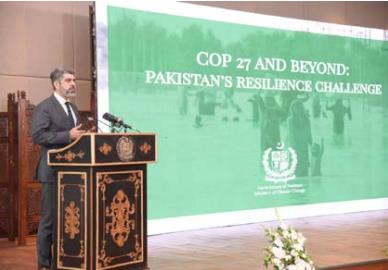
SYNERGYZER: Why do you think the government is not bringing the provinces to accountability?
AHMED RAFAY ALAM: I think there is a certain lag between when a government takes the initiative and when it boils down to the implementation level. The PDM government became seized with the issue as late as July/August last year when the floods took place, and they only had a few months to reposition themselves to build a narrative, which incidentally has been very successful internationally. Now, it will take some time for this to filter down both to the federal and provincial governments. Apart from time, it will also take political commitment, which, unfortunately, we do not have. It is unfortunate that we have a Ministry of Climate Change, and everyone thinks the problems of climate change are just their problems. Also, one needs to understand that the issue is a bit nuanced in terms of the practicalities of climate change. For instance, the impact of climate change in Lahore is very different from what it is in
Sialkot or Karachi; this is why we need to have localized policies. There needs to be decentralization, along with governance for climate change, but no one is talking about that. All we are doing is talking about raising money because we have been impacted by climate change. But let’s not forget that there are millions of other factors with respect to climate governance and justice that need to be addressed, such as water conservation, heat wave management, air pollution etc. How are you going to get your crops to yield when you are seeing three to four degrees of temperature increase? How will you get water to farmers who need to water their crops before they fry up and die due to heat waves, which will last six to eight months? These are important governance questions that need to be asked at the
provincial level. Karachi had a heatwave in 2014, and a thousand people died within a week, and there are more such heat waves coming up. Thankfully Karachi has a heatwave management plan. It has flaws, but it has one. Other cities need to have a similar plan, but there is no conversation happening on this anywhere.
SYNERGYZER: What role can environmentalists like yourself can play to get the government’s attention and reset their priorities?
AHMED RAFAY ALAM: I do give talks regularly. Also, let me remind you that it was a couple of years ago that there was a religious outrage when someone accused of blasphemy was released from jail. There was a civil society group that protested for two days, and they got the (then) Prime Minister of Pakistan’s and the Chief of Army Staff’s attention. I am not saying I agree with their tactics; I don’t think violence is necessary, but they got their message heard and got responded to in two days. From an activist’s point of view, I am envious because I have stood outside the roundabout at Liberty Market long enough with no result, only to realise that in order for the state to respond, you need to directly address it. I think the most successful civil society movements of the twentieth century were The Civil Disobedience in India, which led to the colonial empire leaving and the legislation in the United States regarding the advancement of coloured people. So as an activist, we also have to ask ourselves whether we are doing enough. Yes, I go around and give talks and try and raise awareness but there are still millions of people who are homeless in Pakistan right now and are facing a winter without shelter and food, but all I read in the newspaper headlines are about wristwatches being sold and Generals being transferred. I think the media is complicit in hiding how bad the effects of climate change would be. There is a willful ignorance of the issue.
SYNERGYZER: In the recent Cop27 conference, Minister Sherry Rehman demanded a global ‘Loss and Damage’ fund. How will it benefit Pakistan and the rest of the countries?
AHMED RAFAY ALAM: Well, imagine for a second that you are the president of Trinidad and Tobago or the Bahamas… because these are some of the nations most vulnerable to climate change, and if nothing is done, these island nations will vanish from the face of the earth. Yes, you may worry about some other people being affected by floods, but for them, we can adapt and prepare to some extent, but what answer are you going to give to people whose nations are being wiped out? The ‘Loss and Damage’ fund is not just about Pakistan; it is about countries and people who are disproportionately affected by climate change due to the inaction of the global superpowers and their failure to fulfil their promise to mitigate greenhouse gases. Also, the UN system is slow and bureaucratic. It might take years for the money to come to Pakistan, and unfortunately, by that time, we will have many more floods and heat waves and air pollution. But know that these ‘loss and damage’ facilities are specifically designed so that they don’t come with strings or in the form of a loan. They come as reparation money owed to countries for the devastation they face right now, and Pakistan is one such country. About 70% of the rains that wreaked havoc in Sindh and Balochistan are attributed to greenhouse gases from other countries, primarily from Europe and the US. We are suffering the consequences.
SYNERGYZER: Can you tell us how will this ‘loss and damage’ fund operate?
AHMED RAFAY ALAM: Well, there are a lot of questions about this, for example: Who is going to pay into it? How much would each country pay? What formulas are going to be used? And most importantly, how are you going to get them to pay? Similarly, on the other side, there will be questions on how will the money be spent. If Pakistan gets this funding and puts it into debt relief so that the IMF gets their money back, would that be fair? So there are a lot of questions that have to be answered about the ‘loss and damage’ facility. Moreover, as I said earlier, this is an international process, and it is not going to transpire over the course of a couple of weeks. It will take a few years to answer these questions and get the accountability mechanisms robust enough for transparency. This is why, I think constant campaigning/raising awareness is necessary; constant media messaging is necessary around the world so that people do not forget about this.
SYNERGYZER: How will this awareness be raised? Do you think the common man knows about the adverse effects of climate change?
AHMED RAFAY ALAM: Of course. If you speak to any mother whose kids are suffering from asthma or to a father who wants his kids to go to school but because of the floods, they can’t; I think they all have a good sense of what climate change is and how it is affecting us. They may not be able to articulate it as well as I do, but please do not discount the fact that the common man is ignorant. As to how awareness can be raised, I think the media is one of the best ways to go about it. In a country where there is a low literacy rate, television can play an important role in leveraging your message. Or it can be done the traditional activist way; go to the labour unions, educational institutes or the press. Those are traditional forms of activism outlets. More recently, the internet and digital have made things a bit different, but traditional media is the best way to get your message through to people. But unfortunately, the media is complicit.
SYNERGYGER: What would you suggest should be the way forward?
AHMED RAFAY ALAM: Well, firstly, you have to understand the scale of the problem. We are 1.1/1.2 degrees warmer on average compared to where we were before the industrial revolution, and we are already seeing these catastrophic floods and heat waves. The temperatures are predicted to go past 1.5 degrees by the end of the decade and past 2 degrees by 2050, and the difference between a degree and a half and two degrees will result in 150 million deaths due to air pollution. I have written about it, I have voiced it on television, and even produced a documentary on it. I have protested before the Environment Protection Council, filed lawsuits, and even before the National Assembly standing committee on human rights on these issues, but to no avail. All I’d say is this climate crisis is driven by capitalism, colonialism, consumerism, and the fossil fuel economy, and unless you dismantle them and replace them with something else, you have no hope to combat the climate crisis.

